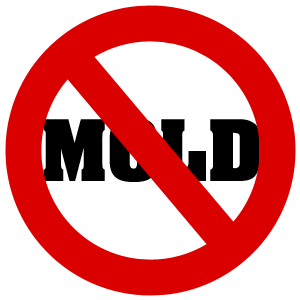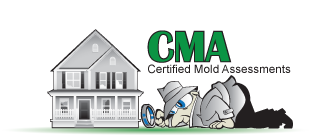 Have you discovered mold growing in your residence or place of business? If so, there are three paths you can take. First, you can turn a blind eye and hope the problem goes away on its own. Second, you can hire a professional mold remediation specialist to take care of the problem. Third, you can take the DIY route and try to get rid of the mold yourself.
Have you discovered mold growing in your residence or place of business? If so, there are three paths you can take. First, you can turn a blind eye and hope the problem goes away on its own. Second, you can hire a professional mold remediation specialist to take care of the problem. Third, you can take the DIY route and try to get rid of the mold yourself.
Turning a blind eye to mold is never a good idea, considering the considerable damage it can do to both property value and health. Hiring a qualified professional will almost certainly result in a lasting, effective removal of mold at its source; but it won’t be free. DIY mold removal is an attractive option for many because you can get started right away, and the overhead costs are minimal (at first!).
If you do choose the DIY route, you should also know that dealing with mold is a risky venture. Mold is essential a biohazard, which is why professionals use protective gear. The other downside is that DIY mold removal, while it may bring fast results, often fails to remove the source of mold (which is usually hidden from sight).
Despite the disadvantages, DIY mold removal can be a viable way to get rid of mold in certain situations. Here are the three most common DIY methods.
1. Bleach and other biocides
Bleach is powerful, and it doesn’t treat bacteria and microorganisms kindly. That’s why it seems like such a logical choice for mold removal. Most people prepare a mixture of bleach and water (roughly 1 cup bleach for every gallon of water) and use a spray bottle to apply the mixture directly to visible mold.
The United States EPA warns people against using bleach and other biocides as a regular treatment for mold. These chemicals are not only dangerous to microbes, but to people as well. Always wear proper skin protection when using bleach, and make sure the work area is well-ventilated. Combining bleach with other cleaning chemicals is also a bad idea, as the fumes present serious health risks.
2. White Distilled Vinegar
Vinegar is an environmentally friendly, natural and relatively safe way to remove mold. It also has antimicrobial and anti fungal properties. The most common method is to spray undiluted vinegar onto visible mold, and leave it there without scrubbing until dry.
Some people swear by this method, but whether or not it really works is a subject of debate. The bottom line is that even if vinegar takes care of 70% of the mold you can see, that still leaves a whole lot of spores that can easily regenerate.
3. Borax (or Boric Acid)
This is essential a natural mineral product, but that doesn’t mean it’s entirely safe. People often use Borax to eradicate ant nests, and also as a herbicide. The usual method is the same as bleach, mixing Borax powder with water and applying with a spray bottle. The visible mold is then scrubbed free, but the area is not rinsed.
You may have success treating small mold problems with Borax. It’s a high alkaline product, and it does kill mold spores. However, the pros generally do not use Borax or view it as a good way to remove mold.
Which DIY method is right for you?
The best way to decide which DIY method is right for you is to mimic professional mold remediation specialists. They always make a careful assessment of the situation (often subjecting the mold to lab tests) in order to determine the best strategy for getting rid of the mold.
Obviously, if you choose DIY, you won’t have access to the professional and scientific methods of professional mold remediation. You can however rely on experience and research to shape you strategy.
Each of the above three methods are known to produce good results with certain types of mold and mold infestations. Your best bet is always to find the underlying cause of the mold (such as water damage or humidity) and take steps toward prevention.
Questions? Comments? Share your thoughts below.
